Reception in preschool or school? How to make the best decision for your child?

Reception in preschool or primary school – which to choose? Deciding whether to enroll your child in a preschool or primary school reception class is one of the most important decisions parents of preschool-aged children face. While the choice might seem simple, it’s actually a decision that will impact your child’s further development. It’s worth considering the differences between these two options and choosing the one that best meets your child’s individual needs, both emotionally and intellectually.
Learning Style – Pros and Cons of Preschool and School Reception
Both preschool and primary school reception classes follow the same curriculum but differ significantly in learning style, atmosphere, and conditions, which greatly influence a child. Preschool education is more child-friendly and accessible. Preschoolers learn through play, engaging their senses, completing projects, and participating in activities that develop intellectual and social skills. The preschool curriculum places great emphasis on emotional development, helping children adapt to future challenges more easily. Various teaching methods foster a child’s holistic development.
Reception in primary school has a more formal structure. Classes are mainly desk-based, and children start using textbooks, which can feel more “formal” compared to preschool. While it is a step toward maturity and adjustment to school life, it may limit opportunities for spontaneous play and developing social skills. In primary school, the more formal approach may require children to adapt to a structured daily routine, which could be challenging and stressful for some.
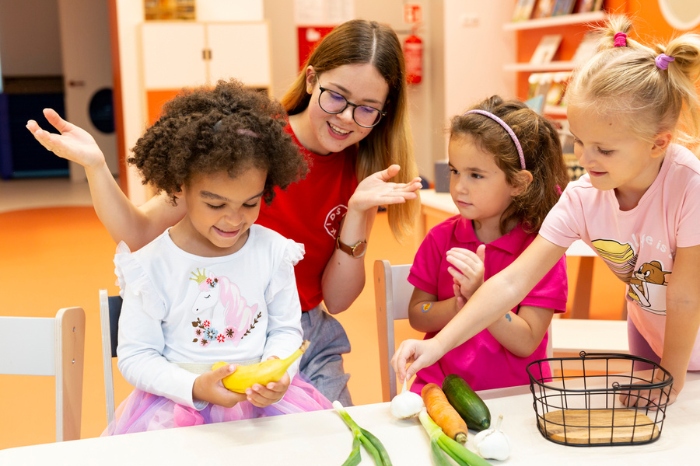
The Role of Parents in Preschool and School Education – Active Support vs. Organizational Challenges
The role of parents changes depending on the chosen option. In preschool, parents have daily contact with teachers, allowing them to monitor their child’s progress, discuss successes, and address challenges. This close collaboration enables adjustments to the educational approach based on the child’s individual needs.
In primary school, due to larger class sizes and limited teacher availability, parent-teacher communication becomes less frequent, often limited to emails. As a result, parents play a more organizational role – assisting with learning, fostering interests, and supporting their child’s education.
Bilingual Education – A Significant Advantage of Preschool
If learning a foreign language naturally is a priority, a bilingual preschool reception class is an excellent choice. In facilities like KIDS&Co., children interact daily with both Polish-speaking and English-speaking teachers. This allows them to learn English naturally through conversations, play, and songs. This approach provides a strong foundation for future language learning.
In primary school, English is typically taught by one teacher for a few hours a week. While children still learn the language, the exposure is less intensive, resulting in slower progress compared to bilingual preschools.
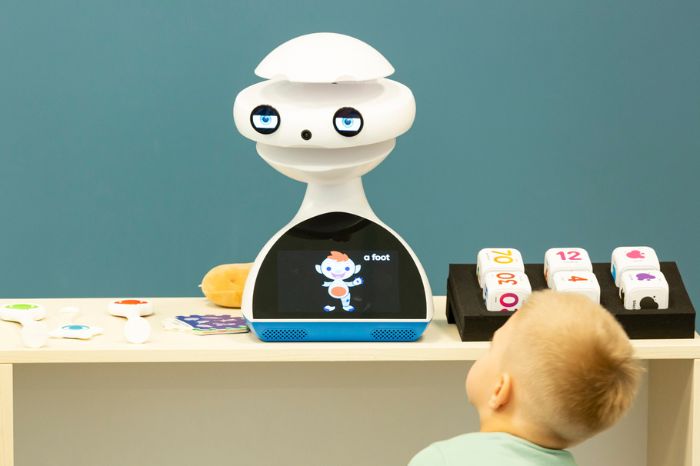
Continuity in the Educational Process
Children staying in a preschool reception class are supported by teachers who know them well. These teachers can continuously adapt the educational program to meet the child’s specific needs. They also create a portfolio documenting the child’s progress, which serves as a valuable tool for the staff working with the child, including new educators joining later.
In school reception classes, children undergo an adaptation process – meeting new teachers and peers. This process often takes at least a month, during which the educational pace slows as the teacher focuses on getting to know the group. Additionally, transitioning to first grade after school reception involves another adaptation to a new teacher and environment.

Facilities – Child-Friendly Spaces
Preschools are designed with young children’s physical and emotional needs in mind. The buildings are colorful, welcoming, and equipped with spaces for play and learning. Reception classes in preschools offer age-appropriate toys and educational materials in environments that foster creativity and imagination.
In primary schools, younger children must adjust to spaces designed for older students. This can lead to stress, especially in interactions with older children and using shared spaces like toilets, locker rooms, and cafeterias. Such changes may be challenging for children who still need a sense of safety and comfort in new environments.
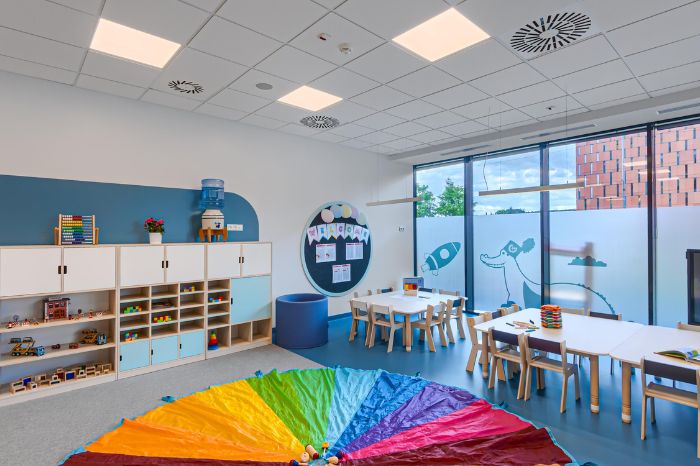
Child’s Time in the Facility
In preschools, children benefit from full-day care and activities during the facility’s opening hours, maintaining a consistent daily routine for both the child and parent.
School reception classes, however, often require children to attend after-school care, where age grouping isn’t always maintained. In larger groups, including older children, younger ones may feel overwhelmed or stressed.
Daily Routine – School vs. Preschool
The daily routine in preschools and schools differs significantly. Preschool education balances learning, play, and rest, adapting to the child’s needs.
In school reception, the day follows a more formal schedule, similar to later school grades. Lessons are conducted according to a timetable, leaving less room for free play or completing activities with the previous teacher.
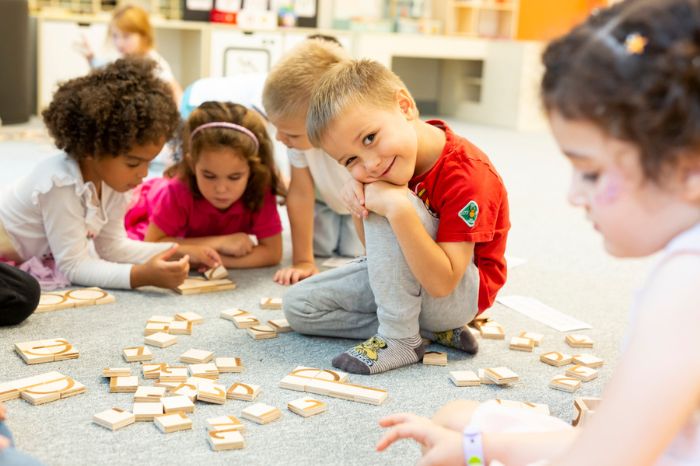
Meals – Convenience vs. Additional Responsibilities
Preschoolers receive full meals, including breakfast, lunch, and snacks, tailored to their age and needs, making it convenient for parents.
In schools, meals are often partial, requiring parents to prepare food. School cafeterias typically serve menus designed for older students.
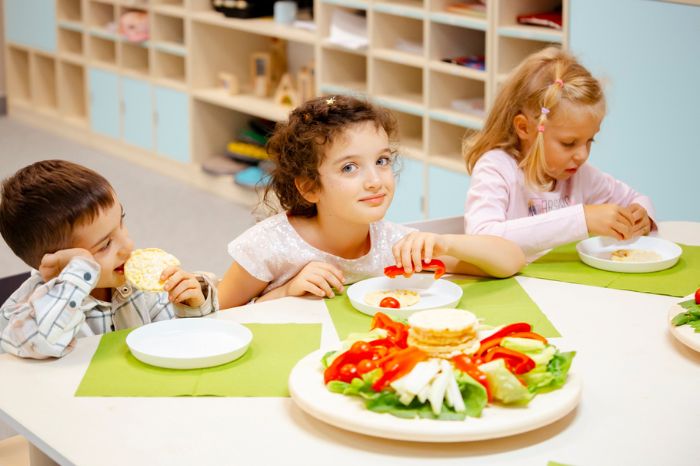
Emotional Readiness
A child’s emotional readiness for learning is crucial. In preschools like KIDS&Co., great emphasis is placed on emotional development. Educational programs teach children to recognize, name, and regulate emotions, fostering security and confidence.
In school reception classes, the focus is often more on curriculum implementation, with emotional aspects given less priority.
Organizational Aspects – Preschool or School?
Another difference is the organization of the academic year. Preschools operate year-round, including holidays, supporting parents.
Schools close during breaks, requiring parents to arrange care for approximately 80 days annually or rely on mixed-age group programs, which may not always be available. Care during breaks is typically an additional cost.
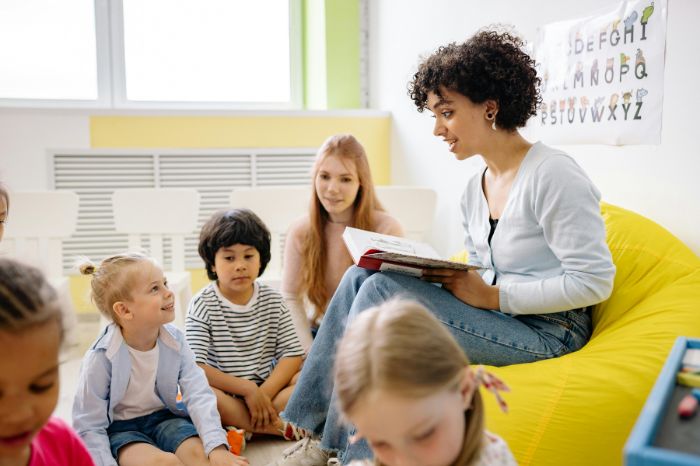
Summary
Choosing between a preschool or school reception class should be thoughtful and tailored to your child’s individual needs. Remember, the child’s well-being – both emotionally and educationally – is most important. Before deciding, discuss with your child’s current teacher and the child themselves. Understanding their needs and concerns will help you make the best choice!
Read more here.
Let’s meet!
We invite all of you to an individual meeting with the headteacher. This will be a great opportunity to find out about our educational offer, ask questions, and visit the kindergarten. You can book one visit for a given day.












